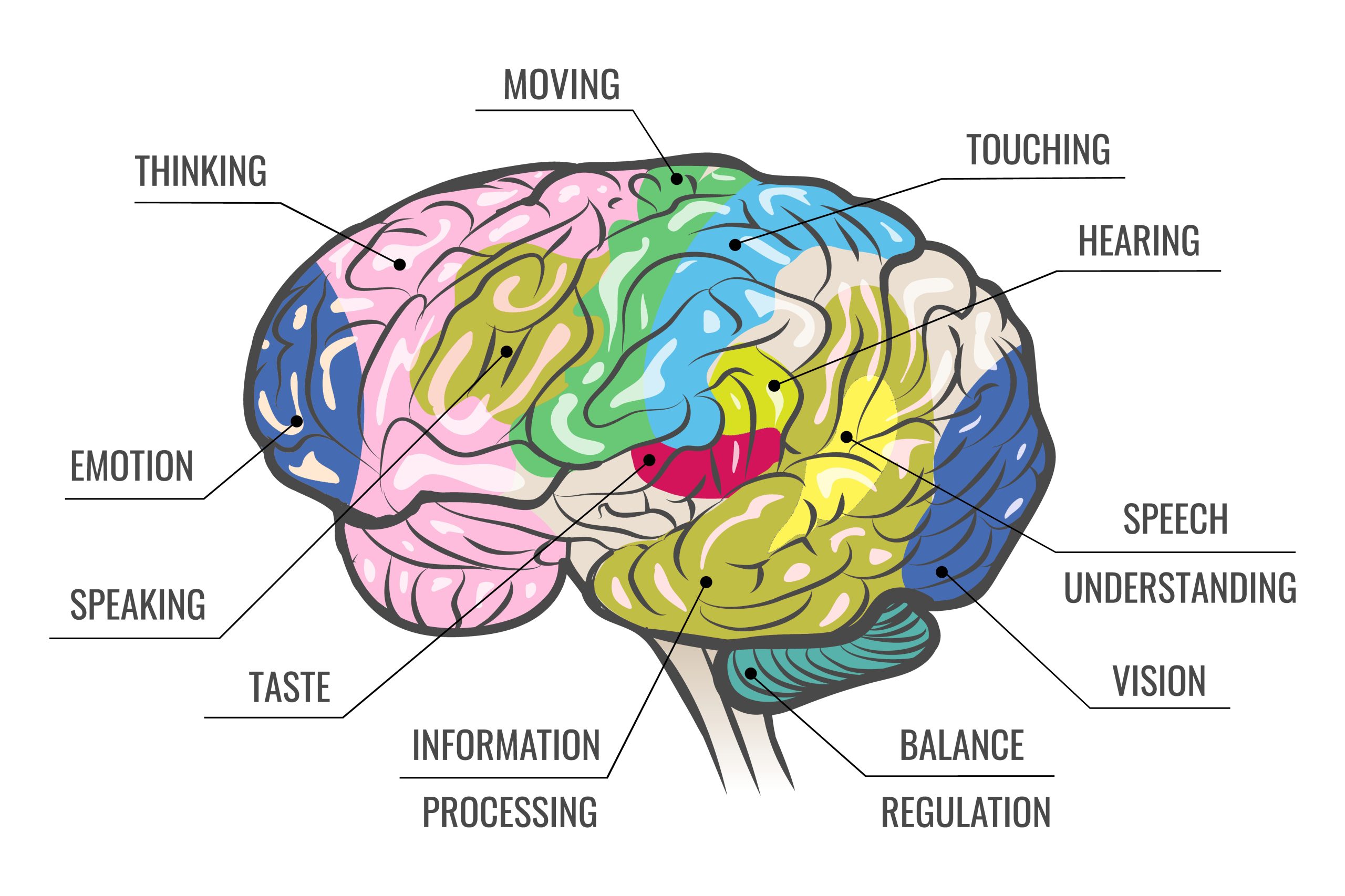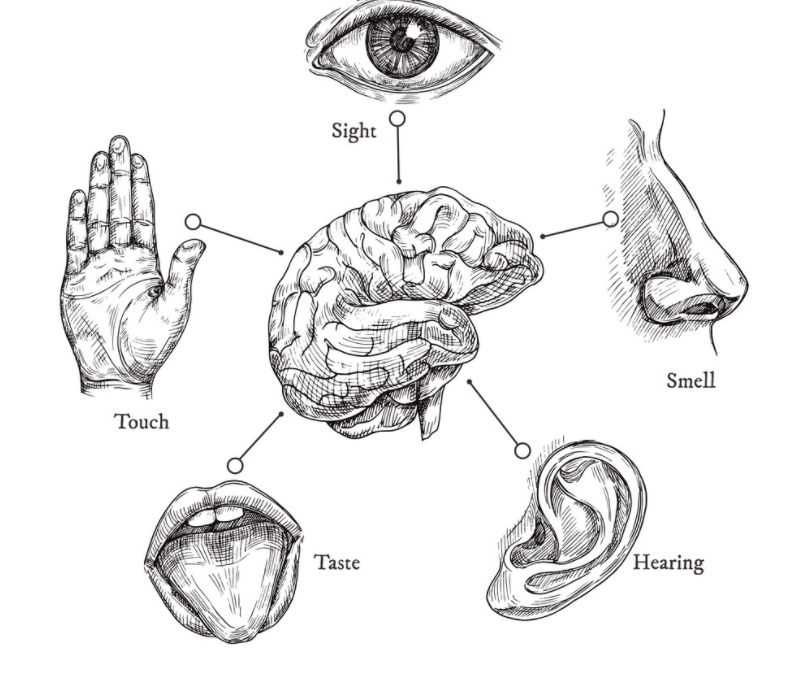
Teaching and Learning Using the Five Senses
When you learn something by utilizing the five senses, neural pathways are created in the correlating area of your brain. When these pathways are created through the use of the five senses, it helps your brain reactivate the connections and recall the information when you need it again. When you use more than one sensory channel in the learning process, there are more connections, making it even easier to retrieve the memory from the recesses of your brain at another time and repeatedly.
Touch 
Touch is one of the earliest ways humans learn. Through touch, we can explore the world around us and discover our environments.
Stimulating learning through touch is especially great for children who are kinesthetic learners. However, touch is an excellent way for any child to learn.
There are many activities you can incorporate into your classroom to help your students learn through touch.
How to Stimulate Learning Through Touch
When you touch something, what does it teach you? Well, it depends.
If you are touching a hot stove, it can teach you cause and effect. Touch also teaches through natural consequences. Obviously, you do not want students in your classroom to learn through dangerous actions such as touching something hot.
So how do you take this concept and transport it to the classroom while providing a safe learning environment? The answer to this question will vary depending on the age of the children and the concept you are teaching.
Infancy to Two Years Old
Touch is a very important learning tool for children in this age range. Touch not only teaches about objects and textures but also about how things work. Touch enhances necessary motor skills.
Allowing young children to manipulate different materials helps with coordination, hand strength, and manual dexterity. Activities such as fingerprinting encourage pre-literacy skills and expression of feelings, as well as learning colors.
Exploring textures allows younger kids to develop their sense of touch. Additionally, you can practice identification through touch. Touching items in a box without looking helps them learn how different objects feel. This activity calls on critical thinking skills at an age-appropriate level.
School Age
As children get older, what they learn through touch will shift and evolve. However, there are simple ways to enable your students to learn through touch.
Are you teaching children in your classroom about weight and measurements? Have your students lift items and feel the different weights. Ask them to identify which objects are heavier and which are lighter.
What about temperature? You can have your students touch different items to identify temperature. If you’re trying to give lessons in texture, you can have students touch and describe different objects.
You can also have students collect items from the natural world by taking them to various outdoor settings to collect and categorize items by their sense of touch. These collections can then be expressed through the feelings they invoke.
Taste
Does taste sound a little confusing? How in the world do children learn through taste? You can go with the easy method of learning the difference between sour, sweet, salty, and savory.
However, you can stimulate learning on a much deeper level, beyond what is commonly understood.
How to Stimulate Learning Through Taste 
You can help students learn through taste in science, geography, languages, and more. If you are teaching students Spanish or another language, utilize food in your lessons that teach about cultural foods that arise from the terrain, weather, and access to agricultural products.
If you are teaching geography, cook with your students and incorporate recipes from different geographical regions. Take time to taste the foods and describe their flavors and the feelings each student experienced. If you’re teaching science, make rock candy or bake with your students to teach them how different chemicals interact with each other and create varying flavors.
In math, you can teach your students about measurements by teaching them how to follow a recipe and layout ingredients. They can double or cut recipes in half. They can also add and remove ingredients to understand the impact each has on taste. Students can be taught, through these activities, to collect data and demonstrate their actions through graphing. In English, you can teach descriptive writing by having students create stories and poems about what emotions and feelings are brought up by taste.
Smell 
The smell is our strongest sense. It has the ability to influence brain activity directly.
The sense of smell is tied to our limbic system. This system connects to the parts of your brain that are responsible for processing learning and emotions.
How to Stimulate Learning Through Smell
Have you ever seen the Disney movie, Anastasia? When she goes to Paris to meet her grandmother, her memories, which have been long locked away, are triggered by the smell of peppermint.
Different smells become associated with memories and people. You can utilize this in the classroom to help your students learn.
For example, if you are teaching your students about plants and flowers in a science section, grab some strong-smelling flowers and have your students smell them. Linking this smell to the lesson will create a neural pathway that can later be recalled.
Sight
When it comes to sight, this is one of the most overlooked senses. When we are engaging in activities, sight is automatically incorporated.
The Anastasia reference from above talks about how Anastasia’s memory was triggered by scent. However, if you recall, immediately after, her memory was triggered even further by the sight of a music box.
Certain items and colors can help to create memories and stimulate learning.
How to Stimulate Learning Through Sight
https://septentrio.uit.no/index.php/SapEdu/article/view/7047/7310
Do you tend to simply write on the chalkboard or give out black and white handouts to incorporate sight into your student’s learning? While this certainly doesn’t hurt, there are ways you can create your materials to allow them to be even more beneficial to your students.
When you are incorporating sight into learning, the most important thing you can do is add color. Black and white are not motivating or stimulating. Various colors can activate different responses.
In addition, color can help prevent boredom. Here is the caution that comes along with that; there is a balance that is needed. It is possible to overstimulate children and distract them from the task at hand if the visual cues become too much.
You can also add visual aids to your teaching to stimulate learning in that method. This is especially helpful for children who are visual learners.
Hearing
Last but not least, you can stimulate learning through hearing. This last one may seem a little obvious; you stand in front of your students and talk and teach; stimulating learning through hearing is a no-brainer.
However, taking this a step further is easy and essential in the classroom.
How to Stimulate Learning Through Hearing

Stimulating learning through hearing can be done easily; however, it does require you to think about it. Going back to the example of Anastasia, when she is opening the music box, she begins to hum a song.
When that song begins playing from the music box, she is able to remember more. Sound can help trigger memories that are saved in various neural pathways as much as sight or smell can.
You can incorporate hearing into many subjects. For example, if you are working on reading with your students, give them a set of headphones and an audiobook and paper book. Have them follow along in the book as they listen to the story being read.
For younger children, play tapes of animal noises for your students to help them identify the animal and make new connections between sight and sound.
Do you remember making a rainstorm as a child with claps and friction on pant legs or by rubbing your hands together? This is another way to incorporate sound into your lesson time. You make a storm, and you learn about weather and science at the same time.
As you consider hearing, don’t forget to consider your tone and the words you use.
If your tone is harsh and strict, students are more likely to tune out. However, if you use a tone that is happy and excited, it will help your students to be excited about learning and participating.
In addition, allowing children to hear praise will build their self-confidence and self-esteem. This will ultimately help them feel more confident in their ability to learn.

Article by Ida Darbinyan
Published 05 Aug 2024